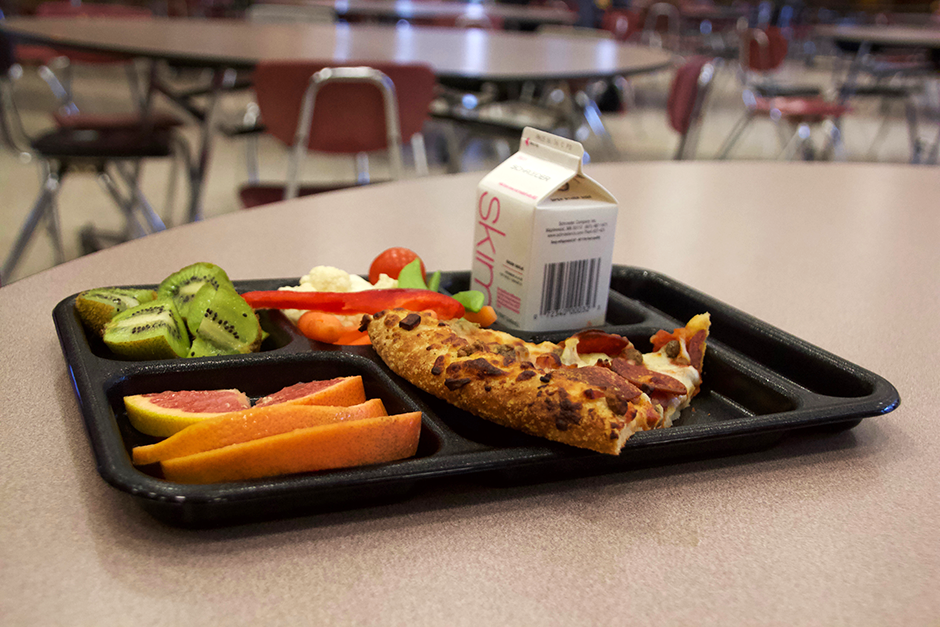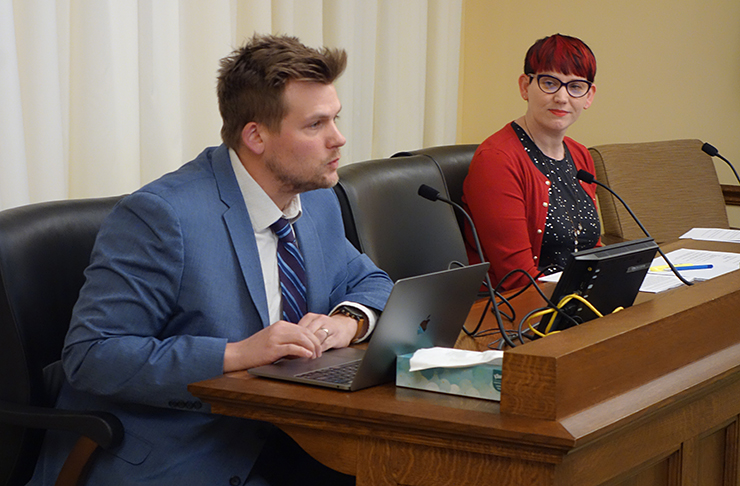This article originally appeared on the MinnPost website on February 16, 2023. You can find the original post here.

One has been very public, the other less so.
After passing the House of Representatives on a party line, House File 5 is expected to receive similar treatment in the Senate. The $190 million a year price tag for expanding free and reduced price lunch to all students, regardless of family income, has the support of Gov. Tim Walz who has included it in his proposed budget for the next two years.
If passed this session, the free-meals program could be in place in time for summer school and be in full use by the start of the 2023-24 school year.
It would be the culmination of a multi-year campaign led by the Hunger Free Schools Coalition to replace the current tier system of providing free or reduced price school meals only to children whose families meet income tests. Backers argue that the subsidy income levels are low — $36,000 for a family of four, for example, for free meals and $51,000 for reduced price meals. That, backers maintain, leaves many students outside the program. Some students, especially as they reach middle school and high school, don’t take advantage of the program because of the stigma of showing other students that they are low-income.
Minnesota partners with the federal Department of Agriculture in the National School Lunch Program and nearly every public school and many private schools take part. Under the Minnesota bills, all students would be eligible for breakfast and lunch without charge with the state covering the cost between what the federal government pays and the cost of universal meals.
The no-charge system was tested during the COVID-19 pandemic when the federal government paid all costs for universal meals. The extra federal payments ended with the start of the 2022-23 school year, with many parents being charged again and schools resuming the chore of requiring students to carry home forms and to the greater chore of urging them and their families to fill them out. Without that form, the students might not get breakfast and lunch, and the schools wouldn’t get their share of hundreds of millions of extra state funding.
Called compensatory aid, the extra money comes on top of the state’s per-student funding formula and is meant to help schools with challenges such as high-poverty, high numbers of English Language Learners and higher-than-average numbers of students who change schools frequently due to family circumstances.
That’s why a bill with less of a profile than HF5 (and its Senate companion Senate File 123) has now been introduced to resolve that quieter issue. Without House File 1547, school districts that otherwise support universal school lunch might be nervous about making the change. That’s because districts across Minnesota — across the nation, really — use headcounts for free and reduced price lunch to qualify for hundreds of millions of extra school funding.
That is, the free-and-reduced-price lunch metric has become a stand-in for measuring poverty levels in school districts and the individual schools within them. Specifically, that metric has been used to divide up $763 million each school year, so-called compensatory aid that makes up about 8.1% of public school funding in Minnesota.
Rep. Sandra Feist, DFL-New Brighton, took on the task of replacing the old metric with a new one. She termed using free-and-reduced-price lunch recipients as a stand-in for poverty measures “a proxy and an imperfect one.” It has taken several months, but her bill moves the state into a new system for distributing compensatory money starting with the next school year.
Feist starts with the fact that large majorities of eligible students qualify for lunch subsidies through something known as direct certification. That method uses data already held by the state and shared between the Department of Human Services and the Department of Education. A student in a family that benefits from food stamps (the supplemental nutrition assistance program known as SNAP) or welfare (the Minnesota Family Investment Program known as MFIP) is already enrolled in the lunch program. Starting this school year, the state also uses enrollment in Medicaid, what the state calls Medical Assistance. Students who are homeless, in foster care, in Head Start or live on reservations are also directly matched and qualify for school meals for the entire school year.
Feist said that process gets districts and the state to about 90 percent of their potentially eligible students. To create a formula that gets districts closer to 100 percent of the student tally that would maximize their compensatory aid, Feist’s bill looks at two other measures: the number of English Language Learners in a district and the number of high mobility students — those who change schools frequently for family reasons. Districts could also continue to collect forms if officials think it would help correct undercounts of students who trigger compensatory money.
“Those two data pieces are already being counted and available so it wouldn’t place an additional burden on schools,” Feist said. “And it is the exact types of students that compensatory revenue was designed to target.”
“Ultimately, if there is another measure that is administratively feasible and accurate that people prefer — the schools, the Republicans, the governor — that’s fine with me, just as long as we make up that 10 percent,” Feist said. “We don’t want universal meals to negatively impact the funding that needs to target those exact students.”
Scott Croonquist, the executive director of the Association of Metropolitan School Districts, said he is still getting comments from the association members about the Feist bill but said “we very much appreciate her work to ‘de-link’ compensatory funding from eligibility for free and reduced price lunch. It is critically important that we move in this direction to ensure school districts do not lose compensatory funding with the move to universal meals.”
But he told the House Education Policy Committee on Wednesday that some of his member districts still fear that the Feist formula will not be enough to provide all of the funds the district would otherwise qualify for.
Matt Shaver, policy director for Ed Allies, told the Senate Education Committee last month that the Legislature should not let the issues around compensatory aid slow or stop the universal school lunch bill.
“We actually don’t need these forms anymore,” he said. “They’re obsolete both for meals and for funding. Universal meals can be a catalyst for making long overdue improvements to compensatory aid.”

Adosh Unni, the director of government affairs for the state education department, said the shift away from soliciting and processing eligibility forms from families “significantly reduces the administrative work required to operate the program.”
Learning from the pandemic model for meals
The pandemic helped make the issue of universal meals more top-of-mind for hunger activists and parents. Schools and parents saw what a no-charge, no-form system would look like and the number of meals served grew significantly.
According to the Minnesota Department of Education, students in the free and reduced program across the state were served more than 36 million breakfasts and nearly 92 million lunches during the 2018-19 school year, the last full pre-pandemic year. That compares to 45 million breakfasts and nearly 94 million lunches served in the 2021-2022 school year under the federally funded hybrid program in which some meals were available via curbside pickup.
The Legislature has tried other methods to ease access to meals at school including measures against “lunch shaming” students who can’t pay debts, said Colleen Moriarty, executive director of Hunger Solutions Minnesota. Following the lead of other states that have eliminated charging for school lunch comes at a time when food shelves in Minnesota logged nearly six million visits in 2022, up by 2 million visits from previous year.
So far, six states have passed universal school lunch policies either on a temporary basis for permanently. Colorado voters adopted the program via initiative with nearly 57 percent of the vote. Eighteen others are considering legislation this year.
“Much like if we’re going to require Minnesotans to come to school we should provide free access to transportation, if we’re going to require them to be there all day we ought to provide free access to school meals,” said Shaver of Ed Allies. State schools don’t charge wealthier families for buses or playground equipment, he said, suggesting lawmakers that went in that direction might not return after the next election.
Republicans suggested that a different, and less expensive, approach would be to use state money to increase the income levels for program eligibility but DFLers who control both the House and Senate have supported a universal program. Students could bring their own lunches if they don’t want to take part and schools could continue to offer a la carte services where students could buy extra portions or treats, snacks and drinks. Those would be outside the free lunch program, however.
“This isn’t a Gatorade-for-all bill, it’s a school-meals-for-all bill,” said Rep. Sydney Jordan, the Minneapolis DFLer and prime sponsor of HF 5.
